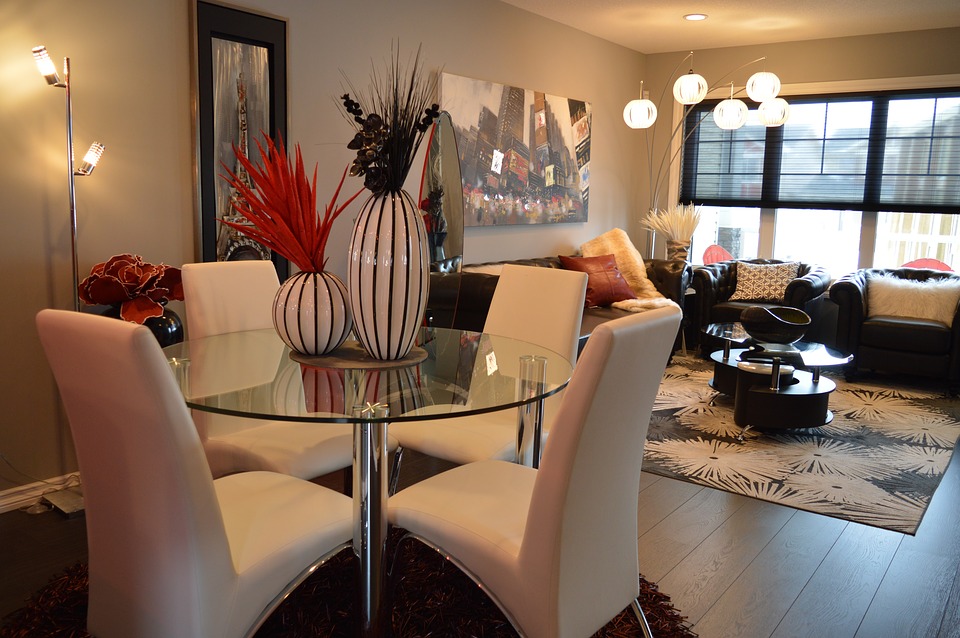As heard on Pulse Mornings with Ian and Vanessa selling your house/condo/apartment is more than just selling the piece of real estate, it’s selling your home. Having a potential buyer see it as a home, their home, rather than a used piece of real estate is key in making that deal quickly, and for the best deal. A potential buyer is already at your door because they like the neighbourhood, or price, or it’s close to shopping or work. Keeping their interest is simply a matter of avoiding a few common pitfalls and capitalizing on the warmth of the home. It’s more than having the smell of the fresh-bakes muffins.
DECLUTTER
This is probably the most important of any aspect selling a home. A messy (or “lived-in”) home can quickly scare off a potential buyer.
Depersonalize the home – take away the family portraits and anything that will stop the buyer from seeing themselves in the home.
Put away the snow globe collection and mountain of kid’s toys. While they both stand for “home”, it speaks more about being lived in and, again, feels like someone else’s home.
Clear out the garage, storage shed, backyard of anything unneeded – garbage or otherwise. Stash it in a storage locker or if necessary, very neatly tucked away so it doesn’t look like a scrap yard.
Take your time to do it so as to not be overwhelmed. Tackle each room, then outdoor spaces.
Make a list of “Keep”, “Donate”, “Recycle”, and “Garbage”. Maybe even have boxes with those labels on them so you handle things once.
Avoid nostalgia and getting hung up on memories and fears of moving on.
FIX
This is something that I hear a lot about: “I want to do (this or that) to get ready to sell my home”. Trying to predict what someone else may want is futile and can cause unnecessary grief and even scare away a potential buyer. While some buyers will look at a home and think about the changes that they want to make for their own needs, others may get completely turned off by that brand new carpet that you just put in.
FIX the things that will be immediately noticeable and give the buyer a reason not to buy: A front door is the very first impression of the home. Fix a sticky door and loose hardware. Maybe replace it altogether.
PAINT the dingy, must, basement bathroom – the upstairs bathroom with the paint peeling from the ceiling. Paint is cheap and goes a long way to freshen things up . Keep the palette neutral though, so as to keep it bright.
LIGHT it up. Clean the dirty light fixtures and even change the bulbs to LED
CLEAN the home. Even if you keep a spotless home, hire a professional service for the day. They’ll take care of those blinds and the places that you skim over each week. The oven. The microwave. The hood fan….. Remove the cat box. Tackle to the outside. Trim overgrown hedges, cut the grass, and maybe put a fresh coat of stain on the fence or house trim . Clean the windows. The curb appeal is second to the front door for importance.
STAGE IT
Potential buyer’s first few minutes in the home will make the decision to continue on with the look around, or to to just walk out. Keeping them in the home is more likely if the home is inviting. If decluttering and depersonalizing the home still has it looking too lived in, or empty if everything is gone to storage, try staging the home. Professionals will bring furniture, rugs, pictures, flowers, dinnerware, and anything else thats needed to make a blank space more of a show home and inviting to the potential buyer. Staging can amplify the home’s features, while downplaying the weaker points. It’s been proven to increase the value of the home, and can even garner more interest and a higher selling price. If a buyer can actually see some furniture in place, rather than imagining the sofa or dresser in place, the concentration moves from guessing to visualizing themselves living in the home. What’s it cost? There has to be a value to go though this work, and yes, there is a cost. Some can be done for as little as $500, or as much as $4000, with the average homeowner investing $1800, depending on the services needed. Considering the cost as buying an insurance policy to help with selling the home.
– Steve Seaborn


